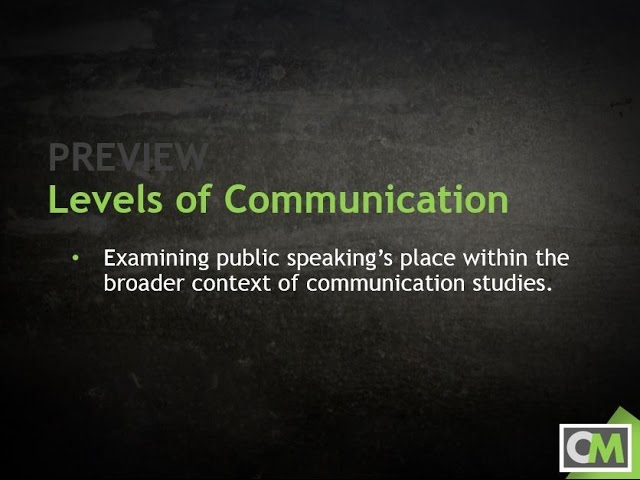Best Communication Styles in the Workplace
The best communication styles in the workplace are assertive and active listening. In today’s fast-paced and diverse work environments, effective communication is crucial for success.
Clear and concise communication allows employees to understand expectations, build relationships, and resolve conflicts efficiently. Assertiveness promotes open dialogue and encourages individuals to express their thoughts and ideas confidently. Active listening involves fully engaging with the speaker, understanding their message, and responding appropriately.
By utilizing these communication styles, organizations can foster a positive and collaborative work culture, increase productivity, and enhance overall job satisfaction.
Understanding Communication Styles In The Workplace
Understanding communication styles in the workplace is crucial for fostering effective teamwork. By adapting and using the best communication styles, such as active listening and clear expression, employees can enhance collaboration, minimize conflicts, and boost productivity.
Effective communication is vital for a successful and harmonious work environment. Understanding the different communication styles present in the workplace can significantly impact work relationships and productivity levels. Let’s delve into the importance of effective communication in the workplace and the impact of different communication styles:
Importance Of Effective Communication In The Workplace:
- Clear and concise communication enhances collaboration and teamwork.
- Clarity in communication reduces misunderstandings and errors.
- It fosters a positive and open work culture.
- Effective communication builds trust and improves job satisfaction.
- It allows for better problem-solving and decision-making processes.
- Strong communication skills contribute to effective leadership.
Impact Of Different Communication Styles On Work Relationships And Productivity:
- Direct communication style: Individuals with a direct communication style are forthright and to the point. This style facilitates efficient communication, as messages are conveyed clearly and quickly.
- Indirect communication style: Those with an indirect communication style tend to be more subtle and tend to hint at their intentions. This style can sometimes lead to misunderstandings and lack of clarity in conveying important messages.
- Non-verbal communication style: Non-verbal communication styles can include body language, facial expressions, and gestures. Being aware of and interpreting these cues correctly is crucial in understanding others better and preventing miscommunication.
- Assertive communication style: The assertive style encourages honesty, respects boundaries, and values the opinions of all parties involved. It encourages open dialogue and problem-solving, contributing to healthier work relationships.
- Passive communication style: Passive communicators tend to avoid conflicts and shy away from expressing their opinions or needs. This style may hinder productive communication and lead to unaddressed concerns.
- Aggressive communication style: Aggressive communication entails confrontational and forceful behavior, disregarding the opinions and emotions of others. This style often creates a hostile work environment and hampers collaboration and teamwork.
By understanding the various communication styles present in the workplace, individuals can adapt their communication methods to different colleagues and situations. This adaptability can improve work relationships, increase productivity, and foster a supportive and efficient work environment. Remember, effective communication is not a one-size-fits-all approach, but an ongoing process of understanding and growth.
Verbal Communication Styles
Discover the best verbal communication styles for a thriving workplace. Enhance your skills in active listening, assertiveness, and clarity to foster effective collaboration and understanding among team members.
Assertive Communication Style: Benefits And Characteristics
When it comes to effective communication in the workplace, assertive communication style plays a crucial role. This communication style is characterized by clear and confident expression while respecting the viewpoints of others. Here are the benefits and characteristics of assertive communication:
- Clear and confident communication: Assertive communicators express their thoughts, ideas, and needs clearly and confidently, ensuring that their message is understood by others.
- Respectful and open communication: This style promotes a respectful and open environment where individuals feel comfortable expressing their opinions and ideas without fear of judgment or criticism.
- Active listening skills: Assertive communicators actively listen to others, paying attention to their viewpoints and seeking understanding. They value the opinions of others and engage in meaningful conversations.
Passive Communication Style: Benefits And Characteristics
On the other end of the communication spectrum lies the passive communication style. While it has its benefits, it also presents challenges:
- Avoiding conflict and confrontation: Passive communicators tend to avoid conflict and confrontation, preferring to keep the peace rather than address issues directly. This can create a harmonious atmosphere but may lead to unresolved conflicts.
- Listening and observing more than speaking: Passive communicators excel in listening and observing others, often taking a backseat during discussions and decision-making processes.
- Difficulties in expressing opinions and needs: Passive communicators may struggle to express their opinions, needs, and desires assertively, which can hinder their ability to contribute effectively to workplace discussions.
Aggressive Communication Style: Benefits And Characteristics
Aggressive communication style, though forceful, can have negative implications on work relationships. Here are the benefits and characteristics of this communication style:
- Direct and forceful communication: Aggressive communicators express themselves in a direct and forceful manner, making their point clear without hesitation.
- Lack of consideration for others’ feelings: This communication style often disregards the feelings and perspectives of others, prioritizing the communicator’s own agenda. This can lead to strained relationships and a hostile work environment.
- Negative impact on work relationships: Aggressive communication style can strain work relationships, creating a hostile atmosphere and undermining collaboration and teamwork.
In the workplace, it is essential to cultivate an assertive communication style to promote effective and respectful interactions. While passive and aggressive communication styles have their benefits, they can present challenges that hinder productivity and positive work relationships.
Non-Verbal Communication Styles
Discover the power of non-verbal communication styles in the workplace. Effectively convey your message through body language, gestures, and facial expressions to enhance understanding and build stronger relationships with your colleagues.
Body Language In The Workplace: Impact And Importance
- Body language plays a significant role in workplace communication as it can convey messages and emotions without the need for words. Here’s why it’s important:
- Facial expressions, gestures, and posture:
- These non-verbal cues can communicate a person’s emotions, interest, and level of engagement in a conversation.
- A smile can create a positive and friendly atmosphere, while a furrowed brow might indicate confusion or concern.
- Gestures and posture can demonstrate confidence, attentiveness, or assertiveness.
- It is crucial to pay attention to these non-verbal cues to better understand and interpret the underlying message.
- Eye contact and non-verbal cues:
- Eye contact is an essential aspect of non-verbal communication.
- Sustained eye contact shows attentiveness and interest in the conversation.
- However, too much or too little eye contact may convey discomfort or disinterest.
- Other non-verbal cues like nodding or leaning forward can indicate active listening and engagement.
- How it affects communication and understanding:
- Non-verbal communication can significantly impact the effectiveness of workplace interactions.
- Misinterpreting body language can lead to misunderstandings, conflicts, and poor collaboration.
- By being aware of and responsive to non-verbal cues, individuals can enhance communication, build rapport, and foster better relationships.
Written Communication Styles: Choosing The Right Tone
- Formal vs. Informal communication:
- Different workplace situations require different tones in written communication.
- Formal communication maintains professionalism and adheres to specific guidelines and protocols.
- Informal communication, on the other hand, adopts a more relaxed and conversational tone.
- Understanding when to use each style is crucial for effective workplace communication.
- Email communication etiquette:
- Email is a commonly used form of written communication in the workplace.
- It is essential to follow email etiquette to convey messages clearly and professionally.
- Use clear subject lines, proper salutations, and appropriate language.
- Avoid using jargon and acronyms if the recipient might not be familiar with them.
- Proofread emails for clarity, grammar, and tone before sending.
- Effective written communication in the digital age:
- In the digital age, written communication has become more important than ever.
- Choose concise and direct language to ensure clarity and avoid confusion.
- Consider the target audience and adapt your writing style accordingly.
- Use formatting tools like bullet points and headings to enhance readability.
- Proofread and edit your writing to eliminate errors and improve overall quality.
Remember, non-verbal communication styles and written communication styles both contribute to effective workplace communication. By understanding and utilizing these techniques, individuals can enhance their interactions and foster a more positive and productive work environment.

Credit: www.nextiva.com
Adapting Communication Styles For Better Workplace Relationships
Discover the key to better workplace relationships through adapting effective communication styles. By understanding and utilizing the best communication techniques, you can foster a positive and productive environment.
In the dynamic environment of the workplace, effective communication is essential for fostering positive relationships and teamwork. Understanding and adapting our communication styles can contribute to better collaboration, improved productivity, and enhanced workplace satisfaction. Let’s explore some key strategies for adapting communication styles in order to build better workplace relationships.
Understanding Individual Communication Preferences:
- Recognize that individuals have different communication preferences, such as verbal or written communication, in-person or email communication, or detailed or concise communication.
- Ask colleagues about their preferred communication methods and adapt your approach accordingly.
- Pay attention to nonverbal cues and responses to gauge how the other person prefers to communicate.
Active Listening And Empathy:
- Practice active listening by giving your full attention to the speaker and avoiding interruptions or distractions.
- Demonstrate empathy by understanding and acknowledging the other person’s perspective or feelings.
- Paraphrase or summarize what the speaker said to ensure understanding and show that you are actively engaged in the conversation.
Recognizing And Respecting Different Communication Styles:
- Be aware that people may have different communication styles, such as direct or indirect, assertive or passive, or task-oriented or relationship-oriented.
- Recognize and respect these different styles by adapting your communication approach to align with the individual’s preferences.
- Avoid making assumptions based on your own communication style and be open to different approaches.
Tailoring Communication To Meet Different Needs:
- Understand the needs and preferences of your colleagues and adjust your communication style accordingly.
- Some individuals may require more detailed explanations, while others may prefer a concise and to-the-point approach.
- Adapt the level of formality and professionalism based on the context and the relationship with the person you are communicating with.
Communicating With Diverse Teams And Colleagues:
- Embrace diversity in communication styles within your team and adapt your communication to accommodate different cultural backgrounds, experiences, and perspectives.
- Be mindful of potential language barriers, and encourage open dialogue to clarify any misunderstandings.
- Create an inclusive environment where everyone feels comfortable expressing their thoughts and ideas.
Cultural Considerations In Workplace Communication:
- Understand and respect cultural differences in communication styles, such as direct versus indirect communication, hierarchical versus egalitarian approaches, or the importance of nonverbal cues.
- Adapt your communication style to align with cultural norms and preferences.
- Seek feedback from colleagues of different cultural backgrounds to ensure your communication is respectful and effective.
Overcoming Language Barriers:
- When communicating with colleagues who have a different first language, be patient and use simple language that is easy to understand.
- Avoid complex jargon or idiomatic expressions that may be confusing.
- Utilize translation tools or seek assistance from interpreters if necessary to ensure clear and effective communication.
Fostering Inclusivity And Understanding:
- Foster a welcoming and inclusive environment where everyone feels valued and respected.
- Encourage open and honest communication, allowing individuals to express their thoughts and ideas freely.
- Be mindful of unconscious biases and actively seek diverse perspectives.
Building Effective Feedback And Conflict Resolution Skills:
- Provide constructive feedback in a respectful and specific manner, focusing on behaviors or actions rather than personal characteristics.
- Actively listen to feedback from others and be open to self-improvement.
- Address conflicts by acknowledging differences, finding common ground, and seeking mutually beneficial solutions.
Providing Constructive Feedback:
- Offer feedback that is specific, clear, and actionable to help colleagues improve their performance.
- Focus on the behavior or outcome, rather than the individual.
- Balance constructive criticism with positive reinforcement to motivate and encourage growth.
Managing Conflicts With Different Communication Styles:
- When conflicts arise due to different communication styles, approach the situation with empathy and patience.
- Seek to understand the underlying causes of the conflict and explore potential solutions together.
- Communicate openly and transparently to bridge the gap and find common ground.
Strategies For Resolving Conflicts And Maintaining Positive Relationships:
- Practice active listening to ensure all perspectives are heard and understood.
- Maintain open lines of communication and engage in constructive dialogue.
- Seek compromise and collaborate on finding mutually agreeable solutions.
- Foster a culture of respect, understanding, and ongoing communication to prevent conflicts from escalating.
By adapting our communication styles to meet the needs of our colleagues and teams, we can cultivate better workplace relationships, foster collaboration, and create a positive and productive work environment.
Frequently Asked Questions On Best Communication Styles In The Workplace
What Are The 4 Types Of Communication Styles In The Workplace?
There are four communication styles commonly found in the workplace: assertive, aggressive, passive, and passive-aggressive.
What Is The Most Effective Communication Style?
The most effective communication style is clear, concise, and respectful, allowing for open and honest dialogue.
Which Of The 3 Types Of Communication Is Most Effective?
The most effective type of communication among the three is subjective, as it depends on the situation and individuals involved.
What Are The 4 Communication Styles For Good Leadership?
The four communication styles for good leadership include assertive, democratic, passive, and aggressive.
Conclusion
In the ever-evolving world of workplace dynamics, effective communication styles play a crucial role in fostering successful interactions and maintaining positive relationships. Understanding the various communication styles and utilizing them appropriately can greatly enhance collaboration, productivity, and overall job satisfaction.
From assertive communication that promotes clarity and mutual understanding to empathetic communication that facilitates meaningful connections, each style has its own unique benefits. It is important to acknowledge that individuals have different communication preferences and adapting to these preferences can lead to more harmonious interactions.
Cultivating active listening skills, expressing oneself clearly and respectfully, and being open to feedback are key elements of effective workplace communication. Ultimately, by harnessing the power of effective communication, employees can create a more inclusive and supportive work environment, leading to increased productivity, stronger teams, and greater success for all.
So, embrace diverse communication styles, understand their nuances, and elevate your workplace communication to new heights!



